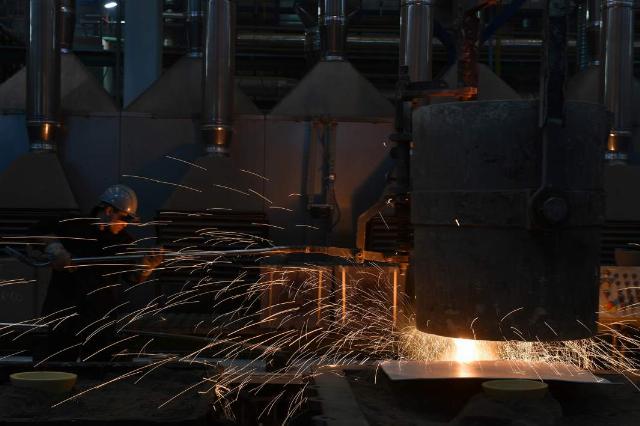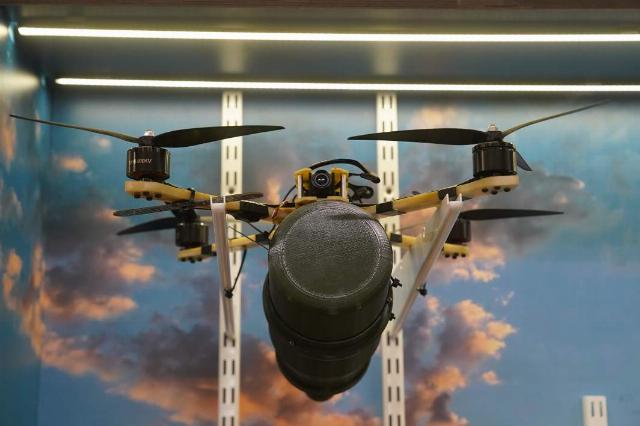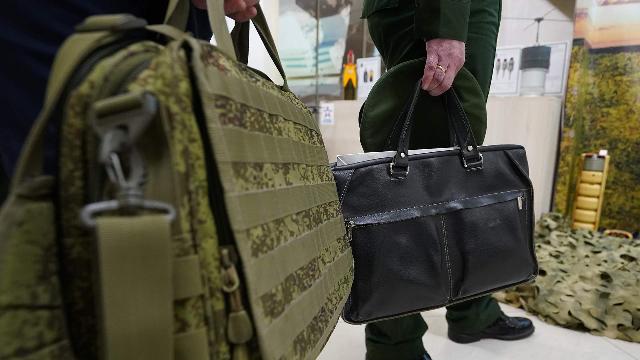The developments of volunteer engineers are not inferior in quality to factory ones
In 2024, Russian fighters began to actively use the developments of the national defense industrial complex in the zone of a special military operation. So, the Piranha 10 FPV drone from volunteer engineers destroyed the American Abrams tank. Now the national defense industry has become a serious industry, Russian President Vladimir Putin said. At the same time, he noted that the products produced by these enterprises, including drones, are not inferior in quality to factory ones. Izvestia found out what developments appeared in the military last year and how they show themselves in combat.
How the national defense industry works
In 2024, the Head of State and the Ministry of Defense of the Russian Federation repeatedly noted the contribution of development volunteers to success in the special military operation zone. So, Vladimir Putin said in December that the national defense industrial complex (MIC) has become a serious industry and it is necessary to use its resources and potential more actively.
In September, at a meeting of the Military-Industrial Commission on the development of unmanned special-purpose aircraft systems in St. Petersburg, the president noted that the products produced by enterprises of the national defense industry, including drones, are not inferior in quality to factory ones.

Photo: IZVESTIA/Semyon Orlov
Image source: iz.ru
This year, for the first time, a separate pavilion was created at the Army International Military Technical Forum to present the developments of volunteer engineers. More than 250 samples from 100 companies were brought there.
"As part of the national defense industry, more than 65 types of products have been delivered to the troops since April, including 31 types of UAVs, four types of unmanned boats," Russian Defense Minister Andrei Belousov said on December 21 at the final meeting of the technical council of the Russian Ministry of Defense and the Popular Front.
There are many talented people in Russia who are now gathering in small groups of enthusiasts and creating various projects in the field of the military-industrial complex, military expert Yuri Lyamin told Izvestia.
— Of course, not all of their developments stand up to the test, but there is a rapid selection and evolution, — he explained. — It is easier for volunteer developers to receive feedback from fighters than for large structures of the military-industrial complex. They are not bound by various often outdated rules and regulations. This allows them to react faster to changes on the battlefield and create relevant devices for fighters here and now: drones, electronic warfare systems, RADAR and others. The national defense industry is no longer just craftsmen in garages who create their devices "on their knees", but also the developments of private companies that are manufactured in their factories.
According to the expert, the national military-industrial complex cannot be opposed to the traditional one, they are both needed.

Photo: IZVESTIA/Eduard Kornienko
Image source: iz.ru
— Large structures provide the front with particularly sophisticated products — tanks, planes, and .by the way. The national defense industry fills in gaps in areas that are developing very rapidly now, for example, drones. And accordingly, both of them are working for our victory," Yuri Lyamin summed up.
How the Piranha UAV hit the First Abrams tank
Already at the beginning of last year, the craftsmen's developments began to show their high efficiency. So, Izvestia wrote that the first Abrams tank destroyed during a special military operation fell victim to a Russian Piranha 10 FPV drone worth less than 50 thousand rubles.
— From the very beginning, we have been supplying helmets and body armor, but the fighters regularly asked us about drones, so we started bringing them from China. Then we realized that there was nothing complicated in their production, and we decided to try to make them ourselves. We hired employees — engineers, pilots, developers — and it turned out," the head of public relations at Piranha Design Bureau told Izvestia.
The fate of one of the volunteer developments is indicative, which in a short time went from an amateur product to official adoption by the army.
Alexander Kamin, a developer of electronic warfare systems from Krasnodar, personally sent drones to the fighters from the very beginning, repaired and stitched them as a volunteer.
— That's how I made a lot of military friends. They had anti-drone devices, but they were Chinese, expensive, and ineffective. I was asked to do something so that I could take it to the exits and it would work for a long time. I came up with the first prototype "on my knee" then. I didn't even have a lab at home yet," he recalls.
Captured M1 Abrams tank at the X International Military-Technical Forum "Army-2024" at the Patriot Convention and Exhibition Center
Image source: Photo: IZVESTIA/Eduard Kornienko
His first "jammer" hit Marinka. The Russian fighters tested it and gave positive feedback. Then Alexander began to assemble a team and built the first small laboratory. The military dubbed the UAV suppression system with an iron, which turned out to be very successful, because of its external resemblance to a well-known household appliance.
This fall, his latest development, the PT-01 "Ptitselov" drone detector, was adopted by the Ministry of Defense and will be centrally supplied to the SVO zone from January 2025. The process from entering the tests to signing the acceptance documents took no more than six months.
The Bulat drone detector went a similar way.
— First, we manually made several copies, conditionally, soldered all the components on a homemade board, — said Sergey Shandobylo, Director of development at the 3mx team. — Then we checked whether the device was working or not. The tests were completed, and based on their results, the Ministry of Defense recommended Bulat v.4 for purchase. That's why we're launching it in series now. And already on the factory machine, we apply the components to the board.
From scopes to backups
Representatives of the national defense industry are creating not only tactical drones and accessories for them, but also more complex equipment in assembly and development. For example, the unmanned boat "Murena-300" was tested in combat conditions on the Dnieper River in the Kherson region. It can reach speeds of up to 30 knots (approximately 55 km/h), and can transport and deliver loads of up to 500 kg to desired locations. And also perform the role of a kamikaze — hitting obstacles on the water, bridges or enemy ships.

Photo: IZVESTIA/Dmitry Astrakhan
Image source: iz.ru
The volunteers also supplied the unmanned rover "Cricket" to the units operating in the SVO zone. The main feature of the model is that its route can be programmed, and then not even interfere in the process: it will take a preset path from point A to point B, visiting point C on the way. It can also be used for patrolling. The load capacity of the machine is 120 kg.
Volunteer developers are constantly improving their products. Previously, a light Plastun all-terrain vehicle was installed in the SVO zone. It has light armor and is used as a vehicle for evacuating the wounded, as well as for reconnaissance, and as a platform for an 82-millimeter mortar. It has recently been seriously upgraded by putting a new Plastun-2 machine in the combat zone.
In addition, craftsmen are developing bulletproof vests, fireproof suits for tankers, video sights and raincoats against thermal imagers, nozzles that turn AK into a shotgun and much more.
Julia Leonova
Vladimir Matveev

